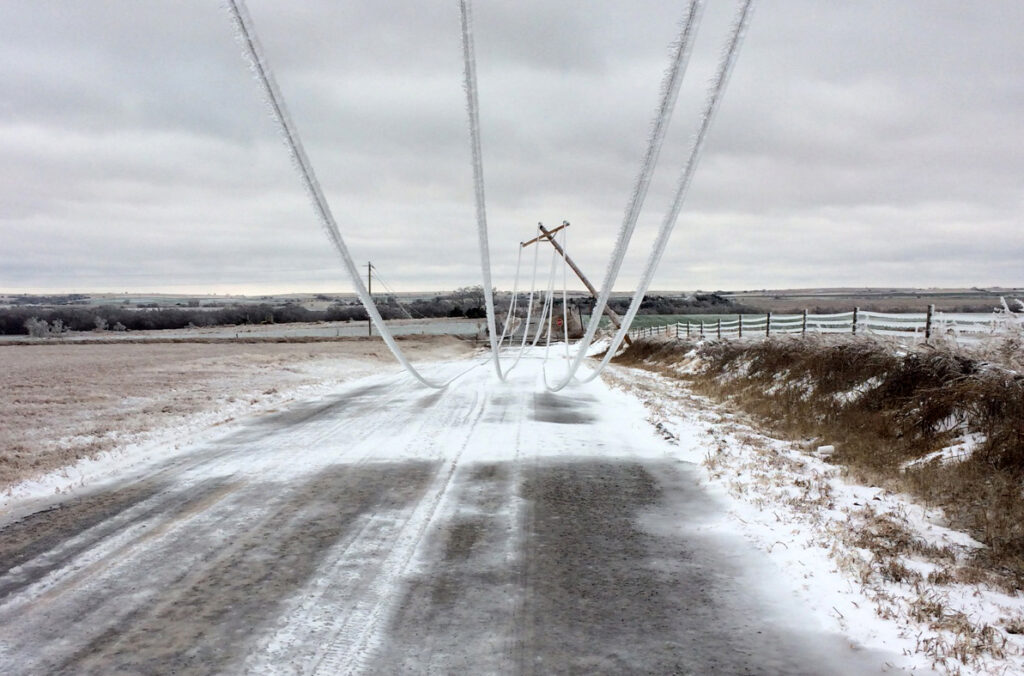
Many U.S. regions are at elevated risk of electricity supply shortfalls in the event of extreme weather this winter, reflecting growing challenges for the power grid as substantial always-available generation is retired, the North American Electric Reliability Corp. said in a new report.
In its Winter Reliability Assessment, released Nov. 14, NERC said all assessed areas should have adequate resources for normal peak winter load. But much of the Midwest, Mid-Atlantic and Northeast—as well as Texas—are at risk of energy shortfalls or natural gas pipeline capacity constraints if there is a prolonged cold snap.
Those risks stem partly from growing power demand and the loss of capacity from retired coal-fired and older gas-fired plants, according to the report.
Challenges tied to higher demand are compounded by “flawed public policies” that are shutting down always-available power generation, NRECA CEO Jim Matheson said.
“This growing threat to reliable electricity jeopardizes the health of local communities and undermines the American economy,” Matheson said. “This report clearly highlights the need to swiftly implement a pro-energy policy agenda with a focus on affordability and reliability for American families and businesses. Smart energy policies that keep the lights on are more important than ever.”
Ongoing industry efforts to bolster winter reliability have made the grid better prepared for the coming months, according to NERC.
But demand is growing from new data centers and increased electrification of home heating and transportation. Meeting that demand has become “more challenging and complex as coal-fired and older natural gas-fired generators retire and are replaced by variable and energy-limited resources,” NERC said.
Infrastructure damage from Hurricanes Helene and Milton earlier this fall could also make the grid less resilient to extreme winter storms while recovery efforts continue, according to the report.
Severe arctic storms have extended across much of North America in three of the past five winters.
Areas at elevated risk of electricity supply or gas pipeline capacity shortfalls during extreme weather this winter include:
- Midcontinent ISO: The region’s coal and gas-fired generation has fallen by more than 5 gigawatts since last winter, partially offset by a 2 GW increase in firm capacity imports. Capacity margins will be helped by a decline of more than 4 GW in forecasted peak demand since last winter.
- New England: Dispatchable thermal generation capacity has dropped by 2.6 GW, while forecasted peak demand has grown by 0.6 GW, or 3%.
- New York: Anticipated reserve margins are expected to be well above the installed margin, which measures how much generating capacity exceeds expected load. But operators will likely be challenged during periods of extreme cold if non-firm gas supplies are interrupted.
- PJM Interconnection (Mid-Atlantic): No reliability issues are anticipated for PJM’s bulk power system. But some gas infrastructure facilities may have to shut down as part of legal proceedings related to a gas pipeline expansion project. As much as 20 GW of generation capacity is directly or indirectly served by the pipeline at the center of the proceedings.
- SERC Reliability Corp.-East: Lower forecasted peak demand is slightly expanding expected reserve margins compared to 2023. However, dispatchable thermal resources have declined by nearly 1 GW, and growth in solar capacity “does little to help meet peak winter demand,” NERC said.
- Southwest Power Pool: Anticipated reserve margins are up, largely due to increased demand-response resources. But forecasted peak demand has risen for this winter by 1.8 GW year-over-year while total generation capacity has dropped by over 4 GW.
- Electric Reliability Council of Texas: Risk of reserve shortage remains elevated, largely due to strong load growth that exceeds gains in dispatchable resources.
NERC recommended ways that grid operators, generation owners and government authorities can prevent energy emergencies and minimize potential power shutoffs. Those actions include preparing for high electricity demand and low wind conditions, winterizing generation units, and increasing operational coordination around generation fuels.
Molly Christian is a staff writer for NRECA.